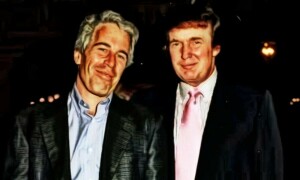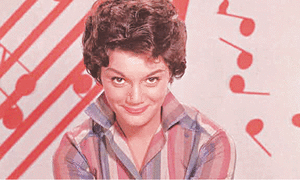In 1977, when an alliance of anti-government parties kicked off a protest movement against alleged fraud in the elections, the then prime minister Zulfikar Ali Bhutto made a television address in which he thumped the chair he was sitting on and declared, “Ye kursi bohat mazboot hai [This chair is very strong].”
A few days later, a furniture brand known for its chairs, Chairman, released a press ad with the caption, “Humari kursi sab se mazboot hai [Our chair is the strongest].”
That one press ad put the brand smack dab in the middle of a political discourse that was raging at the time. Some understood the ad as mocking Bhutto, while others believed it was supporting him. The brand was doing neither. It was simply trying to gain some relevance during a time when a majority of Pakistanis were split into two camps and politics was all they were talking about. Uncannily, Chairman did something that was ahead of its time.
There is now enough evidence that in today’s polarised societies, consumer brands and their advertising agencies are struggling to understand their consumers and to stay relevant.
Numerous articles and books have appeared trying to figure out the ‘enigma’ that is Generation Z (1997-2012). It is as if the problems brands are facing to stay relevant can be resolved if this generation is ‘correctly’ profiled. But it has been profiled. In fact, unlike past generations, this one has been over-profiled.
Yet, numerous brands are continuing to struggle to get a foothold in the psyche and zeitgeist of the times they are operating in. Nevertheless, consequently, an increasing number of brands are realising that the field of marketing requires some major alterations in a polarised milieu. How can a brand find relevance in fragmented societies split into opposing cultural and political camps?
As societies grow increasingly divided along political and cultural lines, and as consumer identities rapidly change, brands must evolve or risk irrelevance
This is the question brands are asking — even though most have decided to go about their business the way they always have. But this means they are suffering from a ‘cultural lag.’ These brands are not keeping pace with the rapid cultural and political transformations taking place in societies and, consequently, within the markets that these brands operate in.
Consumer brands are not just products or services. They carry an ethos in a bid to strike a much ‘deeper connection’ with consumers. Sneakers are products. Nike, a company that makes this product, is a brand. It posits a belief: “Just Do It.” This is not just a slogan but an ethos: ‘Don’t hold back. Believe in yourself. Take the plunge. This act in itself is a win.’
To survive, brands need to remain relevant. One way of doing this is to jump on a bandwagon of trends driven by a particular generation. But this is not working anymore. For example, in Pakistan, some brands, in a bid, to become relevant for the youth, plug rap/hip-hop music in their communication. On most occasions, the youth finds this to be inauthentic and downright silly.
Disney learned this the hard way when it began to shape characters and plots of their films and TV series according to Gen Z’s ‘woke’ beliefs. But the company suffered one flop after another. It lost a huge amount of money by ‘going woke.’ And the irony is, the ‘woke crowd’ wasn’t interested. In fact, it saw Disney’s ploy as a corporate entity turning a cluster of beliefs into silly caricatures.
This shows just how tough it has become for brands to stay relevant in this day and age. Those who are playing safe may still be selling their products, but the emotional hold of the brands that make these products is rapidly loosening.
Politics has become a vital part of the transformations taking place in today’s polarised societies. But most brands are petrified to take sides or, for that matter, even to think about politics — even though it is possible that most of their consumers today would want them to. Brand teams and their advertising agencies are not designed to think any deeper than the standard ways they comprehend their consumers. The focus groups and researches that they bank on are engineered to only skim the surface of segments they are targeting.
It’s like those doltish TV shows in which a host asks the most inane questions from guests. One can get to know what a person’s favourite colour, soft-drink or ice cream flavour is, but that’s about it. Most focus groups turn consumers into caricatures.
A 2021 report by the American Marketing Association concluded that, as the political landscape continues to shift and polarise, the influence of politics on consumption behaviours is poised to grow. The report suggested that “analysing and utilising consumers’ political ideologies may prove not only useful to brands, but also necessary…”

Indeed, but such suggestions horrify most brands. Those who handle them are not designed to think about marketing in this manner. Secondly, most of them have only a superficial understanding of politics. So, even if they do venture out to determine the politics of their consumers, what will they ask? Some brands have started to hire help in this regard by asking sociologists and political scientists to design questioners.
After doing this, they have plunged in to pick a side. The American ice cream brand Ben&Jerry’s openly advocates progressive/liberal causes, whereas Black Rifle Coffee quietly supports conservative causes.
In fact, in the US, there are now numerous ‘Red Brands’ and ‘Blue Brands.’ Red ones identify with conservative views, and the blue ones uphold ‘liberal’ ideals. This is how these brands are finding relevance in a polarised society and, thus, market.
However, not all brands want to go this far — especially in Pakistan. But they are likely to continue losing relevance if they fail to understand the politics of their consumers. They don’t really have to pick a side. They only have to reshape the way they understand today’s consumers. This can provide them a deeper understanding of their consumers and more relevant communication can be the outcome, without even mentioning any politics.
I once worked with a Thai sociologist who was associated with a major advertising agency. This was during a research stint I was a part of in Washington DC, in 2018.
He demonstrated that even when a person enters a store just to buy a soft-drink can, on the surface, his choice in this regard is being influenced by taste and aesthetics. But, more importantly, what’s on the surface is being unconsciously influenced by his political and social views. In politically charged times, a brand needs to dig and mine these.
Published in Dawn, EOS, June 15th, 2025












































